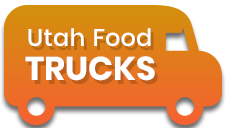
Running a food truck can be as thrilling as it is unpredictable. Between managing supplies, handling customers, and chasing down profitable locations, it’s easy to lose sight of the financial fundamentals that keep your business alive. Many promising food trucks fail not because of poor food or customer service—but because of simple, preventable money mistakes.
This guide outlines the most common financial pitfalls food truck owners face, along with practical, actionable ways to avoid them. Whether you’re just starting or scaling, these principles will keep your truck rolling profitably for years to come.
Takeaways
- Track every dollar—cash flow is king.
- Plan for maintenance, taxes, and seasonal dips.
- Separate personal and business accounts.
- Don’t overspend on startup equipment or marketing.
- Build a reserve fund before expanding.
8 Common Financial Mistakes Food Truck Owners Make
1. Underpricing Menu Items
Failing to include costs like fuel, licenses, insurance, and employee pay often leads to razor-thin profit margins. Use a cost-based pricing model—include every expense, then add your desired profit percentage.
2. Overinvesting in Equipment
It’s tempting to buy top-tier kitchen gear, but overspending early drains your capital. Instead, lease non-essential items or buy refurbished equipment from reliable sources.
3. Neglecting Taxes and Permits
Late filings or unpaid permits can cause heavy fines. Always set aside 20–30% of revenue for taxes. Services like QuickBooks or FreshBooks can automate tax tracking and expense categorization.
4. Failing to Separate Business and Personal Finances
Mixing funds blurs financial clarity and complicates tax time. Open a dedicated business checking account through a platform like Bluevine or your local credit union.
5. Ignoring Cash Flow
Poor cash flow management can quickly sink a food truck. Many owners track sales but not timing of income versus expenses. Studying accounting through an online business degree (available here) helps plan, forecast, and balance finances effectively while operating.
6. No Emergency Fund
Unexpected breakdowns or health inspections can halt operations. Keep 3–6 months’ worth of operating costs in reserve. You can store this in a high-yield savings account at Marcus by Goldman Sachs.
7. Poor Inventory Management
Overstocking leads to waste, while understocking costs you sales. Use an app like MarketMan to track real-time inventory and food costs.
8. Not Tracking KPIs
Without data, you can’t optimize. Monitor food cost percentage, average sale value, and repeat customer rate using free tools like Google Sheets.
9. Skipping Insurance
Skipping general liability, vehicle, or worker’s compensation coverage can be disastrous. Compare policies through InsureMyFoodTruck.com for tailored protection.
10. Growing Too Fast
Expanding too early—new trucks, staff, or menu items—can stretch finances thin. Scale only after consistent profitability and a solid reserve fund are established.
Financial Health Checklist
| Category | What to Track | Frequency | Tools |
| Cash Flow | Revenue, Expenses, Upcoming Bills | Weekly | QuickBooks, Excel |
| Pricing | Ingredient & Supply Costs | Monthly | MarketMan |
| Compliance | Permits, Taxes, Licenses | Quarterly | Local.gov portals |
| Maintenance | Repairs & Upgrades | As Needed | Google Calendar Reminders |
| Savings | Emergency & Growth Funds | Monthly | Marcus or Ally Bank |
How to Build a Financial Safety Net
- Audit expenses. Identify unnecessary costs.
- Automate savings. Transfer 10% of revenue weekly into a reserve account.
- Forecast revenue. Plan for off-seasons based on past data.
- Negotiate with vendors. Request volume discounts or flexible terms.
- Monitor trends. Stay updated via Food Truck Operator.
Quick-Action “Avoid These Mistakes” Checklist
- Track every expense
- Separate business accounts
- File taxes quarterly
- Maintain a cash buffer
- Price for profit, not competition
- Keep insurance current
- Lease equipment when possible
- Use data, not guesswork
FAQ
Q1: How much money should I set aside for emergencies?
At least three months of total operating expenses, including payroll and permits.
Q2: Do I really need an accountant?
If your annual revenue exceeds $50,000, yes—at minimum, consult one quarterly.
Q3: How do I handle seasonality?
Use busy months to build reserves. Consider catering, partnerships, or delivery in slow seasons.
Q4: Should I buy or lease my truck?
If you’re new, leasing minimizes upfront costs. Buying makes sense once revenue is stable and predictable.
Q5: What’s a good profit margin for a food truck?
Aim for 10–15% after all expenses, depending on your market and menu.
Glossary
- Cash Flow: The net movement of money in and out of your business.
- KPIs (Key Performance Indicators): Metrics that help measure success.
- Operating Costs: Day-to-day expenses like fuel, wages, and supplies.
- Overhead: Fixed costs not tied directly to production (e.g., permits, insurance).
- Profit Margin: Percentage of revenue left after all expenses are paid.
Product Spotlight: Square POS System
For fast-paced food truck service, Square POS provides a simple, mobile-friendly payment system with real-time sales tracking. It helps monitor trends, manage employees, and streamline checkout—all vital for financial clarity.
Financial stability for food truck owners isn’t about serving the biggest crowds or having the flashiest setup—it’s about managing every dollar wisely. With consistent discipline, careful data tracking, smart budgeting, and a proactive mindset, your food truck can steadily transform from simply surviving day to day into a thriving, sustainable, and profitable business.
Further Reading & Resources
- SBA Guide to Starting a Food Truck Business
- Restaurant Owner Startup Calculator
- Score.org Mentorship Program
- Food Truck Empire Podcast
- U.S. Chamber Small Business Resources
Transform your brand with Davis Designs, SLC’s best web design firm, and let our expert team elevate your online presence to new heights!
